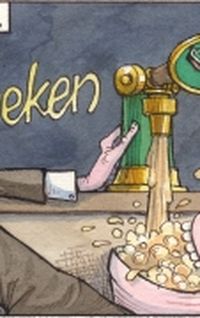Blazing the trail: For pioneering a radically new structure, capitalising on the strengths of its home ground, and providing much needed return in a yield-starved environment, Swiss Re’s SFr320m 7.25% perpetual non-call 5.5-year hybrid bond wins IFR’s Swiss Franc Bond of the Year.
To see the full digital edition of the IFR Review of the Year, please <a onclick="window.open(this.href);return false;" onkeypress="window.open(this.href);return false;" href="http://edition.pagesuite-professional.co.uk//launch.aspx?eid=24f9e7f4-9d79-4e69-a475-1a3b43fb8580">click here</a>.
Swiss Re kick-started the market for hybrids in Swiss francs in late January with a completely new structure and the highest yielding bond of the year in the currency. With the first real financial hybrid of the year, it priced a SFr320m (US$342m) 7.25% perpetual non-call 5.5-year innovative hybrid via a lead group consisting of BNP Paribas, Credit Suisse, Deutsche Bank and UBS.
The global reinsurer wanted an instrument that could be converted into equity capital with more flexibility than a normal hybrid could supply. The structure allowed it to raise additional equity quickly, a significant advantage in the reinsurance industry.
The leads had been mandated in mid-2011. After many months of developing and tweaking the structure and watching the market, conditions looked right in late January.
They held a well-attended roadshow early in the third week of January before pre-sounding for one day and opening books the day after. Initial terms were for a minimum SFr200m deal. Books grew over two days to reach the final SFr320m total when they were closed and the bond priced.
The issue qualifies as Upper Additional Capital under the Swiss insurance framework. Under the terms of the deal the bonds can be converted into equity at the option of Swiss Re (but not investors) at any time and the conversion will be at the then-current stock-trading price.
To entice investors, the bonds convert at face value or par if they are trading below that level. If the bonds are trading above par, conversion takes place at the market value. Another investor safeguard was a conversion price of at least 50% of the share value at the time of issuance.
The bonds can also be optionally converted into stock if a Solvency event occurs, unlike bank CoCos.
Another investor protection was the standard coupon reset, which keeps the coupon reasonably in line with outstanding rates.
A large Swiss institutional investor said that while the transaction was attractively priced, carrying a coupon of 7.25% for a company that has a dividend yield below 6%, the structure was very complicated.
Despite some comments from institutional investors, which the deal was never really aimed at in the first place, what with its lack of rating and quasi-equity structure, Swiss Re did manage to get a decent size away, at least for the Swiss market, in what came to be seen as a groundbreaking deal.
Several hundred retail accounts and private bank customers took part in the deal, some in the minimum SFr5,000 denominations. The public took 72% of the offer, while institutional accounts were less active due to the complex nature of the bonds and the lack of an issue rating.
“The Swiss Re hybrid was the most complicated, innovative and difficult bond to sell this year,” said Denis Vucina, director of new issues syndicate, Swiss francs at Deutsche Bank.
This is not the first time Swiss Re has led the way in terms of innovative structures in the Swiss market, having brought one of the first hybrid issues in 1999. Nor is it likely to be its last. Indeed, Swiss Re followed its franc deal with a US dollar Asia-targeted transaction carrying a similar structure in March.
In a year that saw many new and exciting things occur in the Swiss market, the Swiss Re hybrid was the most novel. Its flexibility and popularity – it was quoted at nearly 110.00 by the middle of November – makes it an easy winner in this most interesting microcosm of a market.


